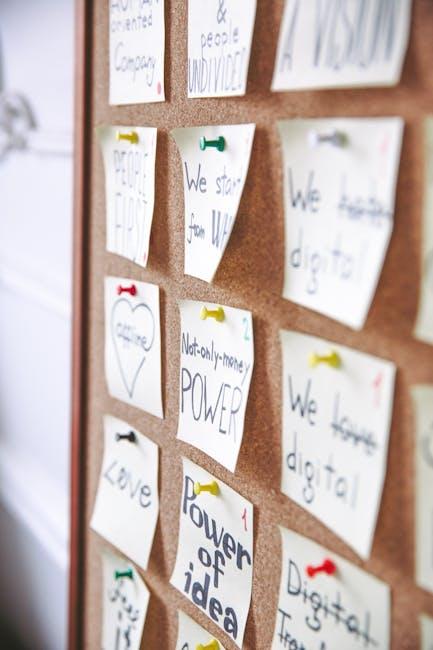In the intricate dance of human connection, each partner brings their own rhythm, shaped by unique emotional needs and desires. As individuals, we are often drawn to those who complement or challenge us, creating a dynamic interplay that can either harmonize or clash. But what happens when these emotional needs differ significantly? Can two people, seemingly worlds apart in their emotional landscapes, forge a relationship that is not only functional but flourishing? This article delves into the possibility of creating a balanced relationship amidst diverse emotional needs, exploring the challenges, potential strategies, and the profound beauty that can emerge from such partnerships. Join us as we navigate the delicate art of balance in love and companionship.
Navigating Emotional Landscapes: Understanding Diverse Needs
In the intricate dance of relationships, understanding and respecting diverse emotional needs can be both a challenge and a rewarding journey. It’s possible for two individuals with contrasting emotional landscapes to forge a balanced partnership, but it requires intentional effort and open communication. Empathy plays a crucial role, allowing each person to step into the other’s shoes and appreciate their unique perspectives. Recognizing that emotional needs are not static but evolve over time is key to nurturing a dynamic and harmonious connection.
- Active Listening: Truly hearing your partner can uncover underlying emotions and needs.
- Clear Communication: Expressing feelings and expectations openly reduces misunderstandings.
- Flexibility: Adapting to changes and being willing to compromise fosters resilience.
- Shared Goals: Finding common ground helps in aligning emotional priorities.
By embracing these strategies, couples can build a relationship where diverse emotional needs are not just accommodated but celebrated, paving the way for a fulfilling partnership.

Building Bridges: Effective Communication Strategies for Harmony
Creating a balanced relationship between individuals with differing emotional needs involves embracing effective communication strategies. Understanding and empathy are the cornerstones of this process. Each partner must first acknowledge their own needs and express them clearly. This requires active listening, where each person feels heard and validated. It’s not just about speaking; it’s about creating a safe space where both parties can share their feelings without fear of judgment.
- Active Listening: Focus on what your partner is saying without interrupting.
- Empathy: Try to understand your partner’s feelings and perspectives.
- Clear Expression: Communicate your own needs and feelings honestly.
- Compromise: Find middle ground where both needs are respected.
Patience and flexibility play crucial roles as well. Both partners should be willing to adapt and grow, recognizing that emotional needs can evolve over time. By nurturing a culture of open dialogue and mutual respect, it’s entirely possible to build a harmonious relationship, even when emotional needs differ.
Balancing Acts: Techniques for Nurturing Mutual Fulfillment
In relationships where emotional needs differ, it’s essential to cultivate a dynamic that fosters mutual fulfillment. Active listening is a cornerstone technique; it involves truly hearing your partner’s needs and responding empathetically. This practice not only validates feelings but also opens pathways for deeper understanding. Alongside listening, open communication is vital. Discussing emotions openly can help identify differences and find common ground.
Another technique is embracing compromise. Here, both parties agree to meet halfway, respecting each other’s emotional landscapes. Setting boundaries can also nurture balance, ensuring each person feels safe and respected. Consider these strategies:
- Regular check-ins: Schedule time to discuss how each partner is feeling.
- Shared activities: Engage in activities that cater to both interests, fostering connection.
- Personal growth: Encourage individual pursuits that enhance personal fulfillment.
By weaving these techniques into daily interactions, couples can create a relationship where diverse emotional needs coexist harmoniously.

Crafting a Unified Path: Practical Steps for Relationship Growth
Building a relationship where two individuals have distinct emotional needs requires intentionality and adaptability. Communication is the cornerstone of this endeavor. Both partners should strive to articulate their feelings and requirements clearly. This involves not only expressing one’s own needs but also actively listening to the other person. Creating a safe space where both parties feel heard and understood can foster deeper emotional connections.
Consider integrating the following practical steps into your relationship dynamic:
- Set Regular Check-Ins: Schedule time to discuss how both partners are feeling and what adjustments might be needed.
- Establish Boundaries: Clearly define what each person needs in terms of space and support.
- Practice Empathy: Make a conscious effort to understand your partner’s perspective, even if it differs from your own.
- Be Open to Compromise: Recognize that flexibility is essential in addressing differing needs.
Through these steps, couples can work towards a harmonious relationship where both partners feel valued and fulfilled.



